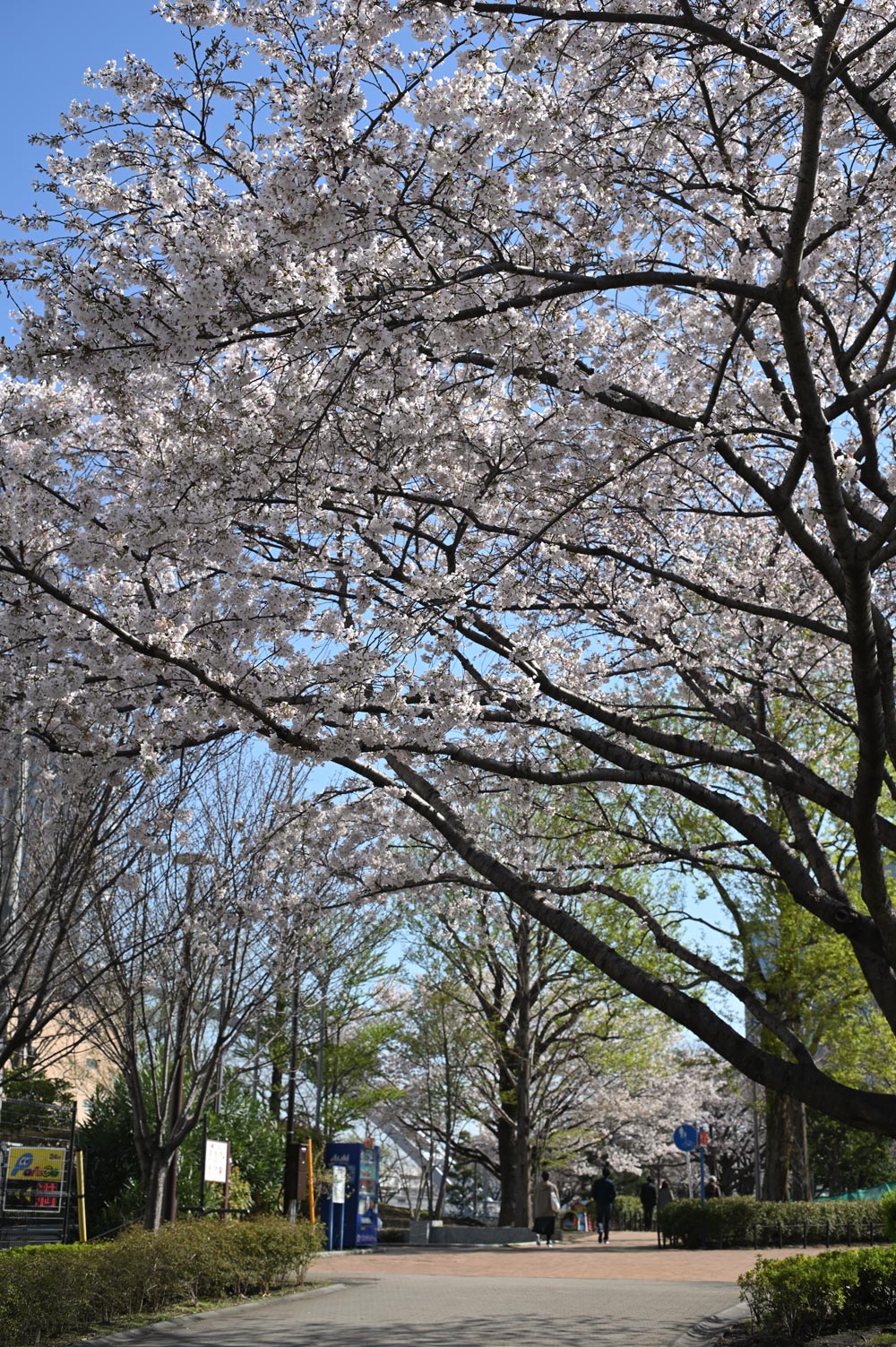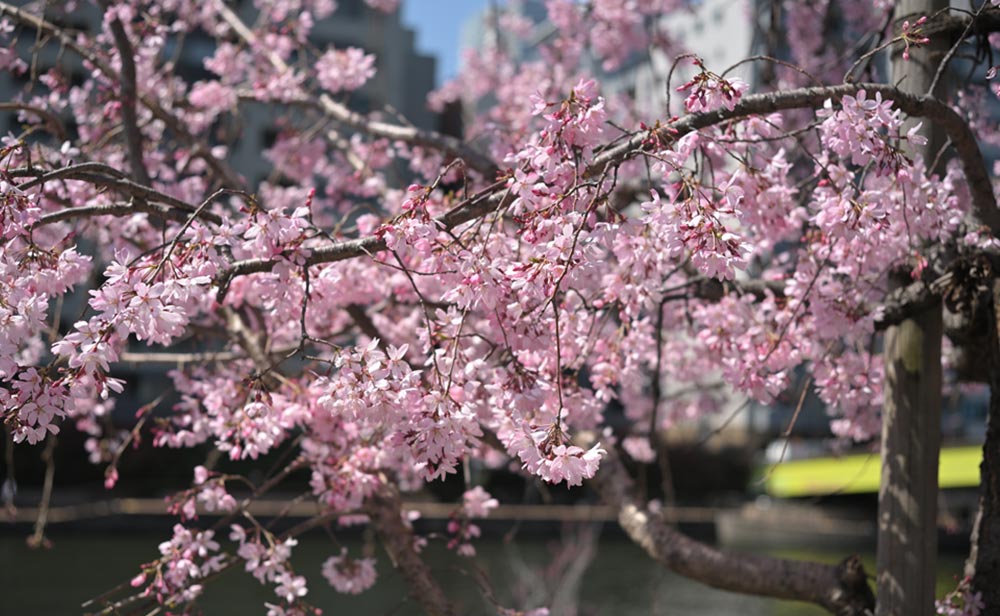NIKKOR - The Thousand and One Nights No.78

A Standard Pancake Lens for the Nikon FM3A
AI Nikkor 45mm f/2.8P
Tale 78 covers the AI Nikkor 45mm f/2.8P, which was developed as a standard lens for the Nikon FM3A SLR camera.
by Kouichi Ohshita
Nikon FM3A
The Nikon FM3A was successor to the Nikon FM2, which was equipped with a mechanical shutter, and the Nikon FE2, an aperture-priority auto SLR camera. It was developed with the intention of combining the best features of both cameras with electronically controlled aperture-priority auto exposure metering and a hybrid shutter that could be operated mechanically when the battery was exhausted or absent. In 2001, when the product was released, the D1X digital-SLR camera was also released, and autofocus cameras were the norm for film cameras. However, there was still great demand for a camera capable of manual operation, especially by photography students who wanted to include the very basics in their studies. The FM3A was the result of a desire to create the definitive camera that met that demand. Mr. Yoshiyuki Nakano, introduced in Tale 60, was the development leader, and Mr. Masaaki Tsukamoto, introduced in Tale 52 about Nikon's Fun Fun LensSet, was the mechanical design leader for the FM3A.
They had one other plan for this camera. While the FM3A was an interchangeable-lens SLR camera, most interchangeable lenses had been re-modeled and re-released as AF lenses by that time. Isn't it possible to make a new lens, at least a standard lens, that matches the FM3A? This was the question that led to a proposal to develop a compact and lightweight standard lens that matched the FM3A.
Pancake lenses
While NIKKOR lenses are often thought of as large and heavy, Nikon has a long history of developing slim SLR lenses, including pancake lenses. Among these are the GN Auto Nikkor 45mm f/2.8, released around the same time as the Nikon F, and the AI Nikkor 50mm f/1.8S (introduced in Tale 60), which was developed as a standard lens for the Nikon EM.
In the 80s and 90s, other manufacturers also released slim 40mm to 50mm lenses touted as easy-to-carry "pancake lenses". In response, during the late 80s Nikon also planned a slim AF lens. That lens went as far as trial production, but did not reach the mass-production stage. After that, a slim lens for the Pronea S was planned, but it also disappeared without seeing the light of day.
Therefore, the lens designing department was very enthusiastic and eager to see a standard lens for the FM3A reach fruition.
AI Nikkor 45mm f/2.8P
The demand for this lens was for a high-performance lens with excellent performance from maximum aperture. It also had to be slim enough to be a good match for the compact FM3A, and it had to have a metal finish that made it look sophisticated. I was in charge of optical design. I was entrusted with this because I had also been in charge of the slim lens for the Pronea S that had been canceled.
Work on optical design began in early January of 2000. In order to make the lens as small as possible, and in homage to the GN Auto Nikkor 45mm f/2.8, a focal length of 45 mm was decided. I also thought that the 45 mm focal length, which offers a slightly broader angle of view than 50mm lenses, was more convenient and would make it easier for users to leave the lens on the FM3A for quick snapshots and the like. As with the GN Auto Nikkor 45mm f/2.8, we concentrated primarily on a four-element, three-group structure for the lens.
A four-element, three-group structure with one convex (positive) element at the front, one concave (negative) element at the center, and a concave-convex (negative-positive) doublet at the rear is known as a Tessar lens. However, Tessar lenses have two weaknesses. One is that they exhibit a great deal of spherical aberration, and the other is that the image plane is not as flat as it is with Gauss lenses.
As with Sonnar lenses, a Tessar lens may be considered an advanced version of the triplet. A concave-convex doublet forms the final convex element of the triplet. The refractive index of the concave element is lower than that of the convex element, which makes for a flatter image plane than is found with the triplet. As this doublet tends to exacerbate spherical aberration and coma, it is difficult to minimize spherical aberration. Further, in order to flatten the image plane, the radii of curvature for the imaging-side surface of the second concave element and the cemented surface of the doublet are increased. This makes astigmatism more likely to occur, resulting in another issue. As a result of this astigmatism, imaging tends to be poor in both frame mid ranges and at the extreme edges.
After roughly a week of research, I created two designs using different structures. With one, I made flattening the image plane the priority, although in this case, contrast at maximum aperture was slightly reduced. With the other, the priority was on increasing sharpness at maximum aperture by reducing spherical aberration and coma. I struggled with which structure to use, but thought that a standard lens should produce consistent results, regardless of the aperture setting. Ultimately, I chose the latter structure and proceeded with optical design.
The final design structure is shown in Fig. 1 below.

The structure is that of a typical Tessar lens. However, one of the unique features is that the aperture is positioned immediately behind the front-most convex element. It was the designer of the lens barrel that decided on this positioning. Another unique feature is that the radius of curvature for each element is relatively large.
Tessar lenses are designed to achieve a flat image plane by reducing the radii of curvature for the imaging-side surface of the second concave element and the cemented surface of the doublet. However, as mentioned above, reducing the radius of curvature for the latter increases spherical aberration, adversely affecting any astigmatism and coma correction, especially when the aperture is positioned immediately behind the front-most element as it is with this lens. I responded to these issues by using a new high-refractive-index glass that had just been developed for the second convex element, which simultaneously increased the radius of curvature for the doublet, flattened the image plane, and corrected spherical aberration and coma.

Despite the fact that the slim AI Nikkor 45mm f/2.8P has a depth of just 17 mm, it maintains a minimum focus distance of 45 cm. While it is a slim lens, it is also a standard lens. As such, the lens barrel designer insisted that it support close-up shooting. Another unique feature of this lens was that it came with a dedicated hood. We at Nikon called this hood a "barnacle hood" because of its appearance. Its outer design was by the same person who designed the optics for the Ai AF DC Nikkor 135mm F2S. He was transferred from the optical design department to the design department, and was in charge of designing the AI Nikkor 45mm f/2.8P.
Lens rendering
As always, let's take a look at the rendering characteristics of this lens with actual images. The sample images for this tale were captured using the Z 6 full-frame mirrorless camera and FTZ mount adapter.
The metal finish looks luxurious, and the focus and aperture work smoothly. Despite being a manual focus lens, the AI Nikkor 45mm f/2.8P has a built-in CPU that allows for the recording of focal length and aperture information in Exif data. In addition, when used with a digital camera, the aperture must be set to minimum aperture, just as with AF NIKKOR lenses.

Z 6 + FTZ w/ AI Nikkor 45mm f/2.8P; at maximum aperture, 1/2000 s, ISO 100, processed with NX Studio

Z 6 + FTZ w/ AI Nikkor 45mm f/2.8P; at f/8, 1/400 s, ISO 100, processed with NX Studio
Samples 1 and 2 are photos of distant scenes captured at maximum aperture and f/8, respectively. In Sample 1, you can see that the four corners of the frame are darker due to peripheral illumination falloff. This can be reduced by using a smaller aperture (higher f/number), and it is completely eliminated between f/5.6 and f/8. Further, even when the images are enlarged, it is clear that roughly 70% of the frame from the center outward is very sharp from maximum aperture, and there is very little difference in terms of sharpness between Samples 1 and 2. The difference is in rendering at the edges of the frame where contrast gradually drops as if influenced by flare, and at the most extreme edges where there is image blurring that is likely caused by astigmatism. Flare at frame peripheries is almost completely eliminated between f/4 and f/5.6, but to eliminate image blurring at the most extreme edges, an aperture setting between f/8 and f/11 must be used. Such blurring at the most extreme edges is a weakness of this lens. However, as you can see from the buildings in these photos, there is very little distortion.

Z 6 + FTZ w/ AI Nikkor 45mm f/2.8P; at maximum aperture, 1.3 s, ISO 400, processed with NX Studio

Z 6 + FTZ w/ AI Nikkor 45mm f/2.8P; at f/5.6, 3 s, ISO 400, processed with NX Studio
Samples 3 and 4 are photos of the same scene captured at night at maximum aperture and f/5.6, respectively. If we look at Sample 3, you can see that it exhibits blue and white flare near the center of the frame that was not visible in the daytime images. That is why photos of night landscapes and stars are referred to as "lens test charts". As explained with Samples 1 and 2, this flare can be reduced by stopping down the aperture to f/4, and nearly eliminated at f/5.6. Sample 4 was captured at f/5.6, and is, therefore, a sharp and clear image exhibiting no flare.

Z 6 + FTZ w/ AI Nikkor 45mm f/2.8P; at f/8, 1/250 s, ISO 100, processed with NX Studio

Z 6 + FTZ w/ AI Nikkor 45mm f/2.8P; at f/4, 1/1250 s, ISO 100, processed with NX Studio
Sample 5 is a photo of a line of cherry trees, almost at the peak of blossoming, captured at an aperture setting of f/8. One of the best things about a 45mm lens is that it is a "standard lens" that can be used to achieve both wide-angle and telephoto rendering. Even with scenes for which a 50mm lens is just a little too much, you may find this lens more useful as it provides more of a wide-angle feel. However, with a depth-of-field that is shallower than that of a wide-angle lens, stopping down the aperture further than f/11 is recommended when a deeper depth-of-field is desired.
Sample 6 is a photo of a weeping cherry tree captured at a short distance for a telephoto effect that blurs the background. It was captured at an aperture setting of f/4. With telephoto shooting, it is normal to use maximum aperture. With this lens, however, shooting at maximum aperture results in ring-shaped blur with strong edges. Therefore, the aperture was stopped down one stop for this image. Stopping down the aperture causes the edges around blur to disappear for relatively smooth bokeh.

Z 6 + FTZ w/ AI Nikkor 45mm f/2.8P; at f/5.6, 1/25 s, ISO 720, processed with NX Studio

Z 6 + FTZ w/ AI Nikkor 45mm f/2.8P; at maximum aperture, 2.5 s, ISO 400, processed with NX Studio
Sample 7 is a photo of cut flowers captured at a short distance. It was taken at an aperture setting of f/5.6. Many pancake lenses are designed to be slim, so the amount of lens extension is kept to a minimum. This lens, however, maintains a minimum focus distance of 45 cm without compromise, even at close range. In terms of optical design, there is little drop in performance with shooting at short distances, so it is a good choice for tabletop photography.
Sample 8 is a night landscape captured at a short distance at maximum aperture. As explained with Sample 6, the background blur produced by this lens at maximum aperture has strong edges, but with night landscapes like this in which background light sources are blurred, the shape of the blur is quite impressive. Edges are not strong enough to be considered "bubble blur", and as the focal length is short, large blur can only be achieved by getting close to the primary subject. This is, however, one feature of the lens that I hope users will take advantage of.
A short-lived lens
The AI Nikkor 45mm f/2.8P was introduced in 2001, the same year the FM3A was released, but was discontinued when FM3A production ended due to the rapid rise of digital cameras. The FM3A was discontinued because it turned out to be very difficult to achieve compliance with the Restriction of Hazardous Substances Directive (RoHS 1) adopted by the EU in 2003. This standard lens was discontinued at the same time. It had a relatively short life. One of the reasons for this was likely that at roughly ¥50,000, the kit containing the lens, dedicated filters and hood, and pouch was relatively expensive. As a designer, I find this disappointing.
For this tale, I used the AI Nikkor 45mm f/2.8P with the Nikon Z 6 full-frame mirrorless camera, but I am sure it could just as easily be used with a compact SLR camera such as the FM and FE film cameras, or the silver Df digital camera.

NIKKOR - The Thousand and One Nights
The history of Nikon cameras is also that of NIKKOR lenses. This serial story features fascinating tales of lens design and manufacture.

